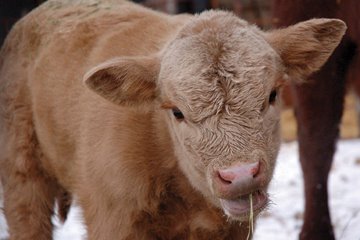 by Debbie McMillin
by Debbie McMillinThe summer of 2008 has seen considerably better prices than we have experienced the last few years! Fed cattle prices saw contra-seasonal improvement throughout the summer. Cow prices exploded to levels reminiscent of pre-2003 and now as fall draws near, yearling values are holding strong.
Fed cattle prices typically peak in the early spring. The reason for this is the consumer demand for middle meats as the barbeque season approaches and the supply of longer fed cattle available for slaughter is generally small.
In the summer, consumer demand would typically weaken as consumers turn to lighter meals which increases hamburger sales, but often decreases the higher valued middle cuts. In addition, summer is when the volume of front-end market ready fed cattle would be large enough to easily meet packer demands.
This summer was abnormal as far as following the historically typical trends. Price increased in the spring, posting an average of 87.93/cwt in April and 90.86/cwt in May. These averages increased compared to the previous months, however were still down 13.94/cwt and 8.21/cwt respectively when compared to the same months in 2007.
It was June that the current year started to surpass the 2007 averages. June averaged 90.18/cwt, which was 1.97/cwt higher than June 2007. According to the Canfax fed steer average in Alberta for July, fats sold for 95.55/cwt, which was more than 11.00/cwt higher than in July 2007.
The strong summer prices have kept feedlot operators selling cattle and staying current, which has kept supplies tight and packers reaching to secure inventory. Strong beef demand south of the border throughout the summer, coupled with increased U.S. beef exports due to their weakened currency and lower on-feed supplies, has fueled the good summer prices. The start of August saw the weekly averages on fed steers dip down as low as 92.00/cwt, however a lower Canadian dollar helped to pop the price up to 98.00/cwt by mid-month.
Cull cattle have seen a large improvement when compared to prices a year ago. The strong summer rally was a result of demand for cows as the U.S. herd continues to contract. The U.S. beef exports have decreased net beef supplies in the U.S., which has created additional demand for Canadian product. The smaller number of fed cattle slaughtered in Canada has also increased demand domestically. The cow rally has seen an improvement of 62% or nearly $20/cwt from the January average to the July average D1,2 cow price in Western Canada. Last year the improvement from January to July was just over 10.00/cwt while looking back to pre-BSE years, the change from January to July in 2002 was actual a negative 6.00/cwt, while 2001 saw and improvement of 10.00/cwt. The start of August saw the D1,2 cow price in Western Canada at 54.00/cwt.
In general, when feed costs are high, feeder prices are soft. While this is the case on some classes of cattle, the yearlings have held prices fairly strong through the summer. The 850 lb. feeder price typically makes its high in August. This year there has been substantial improvement since the start of January, the price current average is at 102.73/cwt, which is lower than 2007 but holding on well given current feed costs.
Throughout the summer the heavier feeder cattle have responded to premiums in live cattle futures. The weakening of the Canadian dollar as of late should also support the feeder cattle market in Canada, however the start of the COOL program in the U.S. may decrease buyer competition.
In all, the summer posted some good prices for Canadian sellers. Heading into fall there are many factors for Canadian producers to watch - such as the impact of the COOL program, the Canadian dollar, feed grains trading in a weather market as harvest continues, U.S. buyer demand or lack of and the potential of their weaker economy decreasing consumer demand.


No comments:
Post a Comment